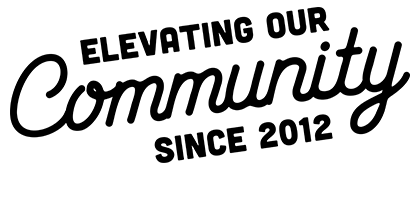If your company has realized you need a new website—or if you’re a new company ready to launch yourself online—then you’re probably swimming with questions. Who should we hire? Do we need a professional team or just a guy who’s good with computers? What’s involved? How long will it take? And—maybe most stressful—how much will this cost?
Of course, at A-LINE, we’re going to recommend you hire seasoned professionals to design your site. But we’re not just pitching ourselves. The process of researching, creating, analyzing and setting up a website for future success is not just about choosing a nice design—it’s a long, intense and thorough process.
So let’s break down everything that’s involved in creating your most important marketing tool, your hardest working employee, and the key piece that identifies your brand within a community: your company website.
Step 1: Research: Know the business, the industry and where you want to go
Any good website design must begin with a complete understanding of the organization and the industry. So we kick off all website plans by interviewing key players in an organization to understand branding and marketing challenges, learn about target audiences, and establish business goals and future plans. We perform our own research of each business, as well as look at other similar organizations in the community and industry. We want to know the industry trends and standards seen in brands, marketing plans and websites to ensure that any new site fits strategically and progressively into a larger community.
Step 2: Organization and Strategy: Figure out what needs to work and how to accomplish it
It’s counterintuitive to make any attempts at choosing designs or templates without fully understanding how a site needs to work. At A-LINE, our team develops a Website Strategy document in advance of coordinating design as a way to ensure the final site will perform all the tasks needed. We combine the research we performed on what the company needs now and in the future with a full analysis of the materials on the previous site (when applicable) and comparisons to how other similar organizations’ sites work. We then sketch out a sitemap to ensure all necessary information will be housed on the site, and we draft navigation plans and key menus to ensure various audiences can access the information they need. Knowing the company’s goals helps direct our plans for calls-to-action and conversion pages, ensuring that strategy and purpose influence each page navigation choice.
So by the time we’re ready to work on design, we know how the navigation menu should work, where the key action items should be located, and how the layout should influence traffic and conversions. This kind of research-plus-strategy approach ensures your website is hard-working, well thought out, and focused on results. After all, a website is not just a landing page—it’s an organization’s most powerful sales tool.

Step 3: Design: Beauty that works hard
With strategy document in hand, our designers have the task of making the workhorse look good. Referencing industry standards and design trends, A-LINE ensures new websites are not only attractive, but also progressive. Our designers develop websites that incorporate thoughtful imagery, clear navigation and bold design elements. Branding elements, colors and fonts are chosen with care to effectively convey the organization’s brand while appealing to its target audiences. A-LINE also ensures that every design that looks great on a desktop computer also translates to all types of mobile devices so that all users can access a high-quality version of the site.
Oftentimes our designer develops more than one design option; every design version accomplishes the same goals but includes different navigation bars, main images or call-out boxes. A-LINE works with our clients to help select the best design choice for a landing page, and then designs subsequent pages that match the look, feel and navigation of the homepage. This final design is submitted along with the Website Strategy document so that clients understand why each element exists and how it will attract visitors and secure conversions.
Step 4: Programming: Keep it smart, intuitive and safe
Once the site and strategy are approved, A-LINE’s programmers begin to build the site. We program and provide a customized CMS (content management system) that allows for client organizations to be able to add their own content and information now and in the future. Unlike other publically available CMS sites, our custom CMS is flexible, always up-to-date, and secure from online hackers. Not only will we fully program your site, but we’ll provide training in using the CMS so that almost anyone in your organization can add content to the website.
Finally, we’ll test the site. And test it again. Then test it again. By the time A-LINE is ready to launch a site, we are confident that every button and link works, every form loads, and every image is correctly sized and beautiful. We put in the hours up front so that no customers experience any problems.
Step 5: Launch and Support: The site is up…but now what?
A website is not a brochure. You don’t want to just put it up and just hope your audience reads it. To get the most out of your newly designed and highly functional website, you need to put it to work. At A-LINE, we don’t just deliver websites—we deliver a strategy document and training to show you the best ways to get your website out into the world and working for you. We provide guidance and recommendations on marketing, social media integration, analytics and online advertising to help you find your audience and get them clicking through your site. And we can follow up months after to show you what’s working and what might need adjustments moving forward.
As you can see, building a website is much more than dropping content into a template. A well designed, thoughtful website should be backed by research, implemented with strategy, designed with purpose, programmed wisely, and launched with plans. These steps require expertise and time, and yes, those require payment. So while this kind of website will cost more than hiring your cousin to complete an online form, the final result will be more than a brochure—it’ll be your best employee, your most successful sales tool, your identity in the industry and your strategy for future success.



